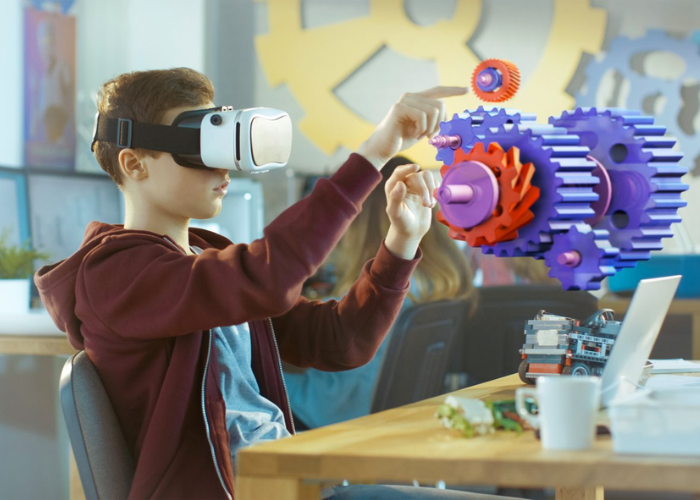Virtual Reality (VR) is an exciting new technology that has the potential to revolutionize the way people interact with the world around them. From gaming to education, VR is being used in increasingly innovative ways. In this blog, we’ll explore the different ways in which virtual reality is being used and the potential downsides of this technology.
What is Virtual Reality?
Virtual Reality is a technology that immerses the user in a three-dimensional virtual world. This virtual world can be simulated using a computer, or experienced through a headset and other equipment. With these tools, users can experience the virtual world as if they were actually there in person. This technology is being used in many different ways, from gaming to education, to medical treatments.
The Benefits of Virtual Reality in Gaming
Virtual Reality has the potential to revolutionize the gaming industry. With this technology, users can experience games in a completely immersive way, as if they were actually in the game themselves. This allows for a more lifelike experience, as users can see, feel, and interact with the world around them. Games can be made even more realistic with the use of haptic feedback, which allows users to feel the effects of the game in a more tangible way. This technology has been used to create some stunningly lifelike games, and the results can be truly breathtaking.
The Benefits of Virtual Reality in Education
Virtual Reality can be used to create immersive and engaging learning environments. For example, VR can be used to simulate experiments and allow students to experience them in a safe and controlled way. It can also be used to create interactive 3D models of complex concepts, such as mathematical equations or biological processes. This technology has the potential to revolutionize the way that students learn, as it can make abstract concepts easier to understand and more engaging to explore.
Other Uses of Virtual Reality
Virtual Reality can also be used in many other ways. It has been used to create virtual tours of historical sites, to create virtual art galleries, and to create immersive experiences in sports arenas. It is also being used in the medical field to support treatments for anxiety, PTSD, and other disorders.
Potential Downsides of Virtual Reality
Despite its potential benefits, there are also potential downsides to Virtual Reality. There are concerns about the effects of extended use of this technology, particularly on young people. There are also concerns about the potential for users to become overly reliant on virtual worlds, and neglect to experience the real world around them. Additionally, there are questions about how this technology can be used responsibly, and how it might be used in a way that is exploitative or unethical.
Conclusion
Virtual Reality is an exciting and innovative technology with the potential to revolutionize the way people interact with the world around them. It has been used in many different ways, from gaming to education, and has already had a massive impact on the world. However, there are also potential downsides to this technology, and it is important to consider how it can be used responsibly. With the right precautions, Virtual Reality could be used to create exciting and engaging experiences that will shape the world for years to come.




